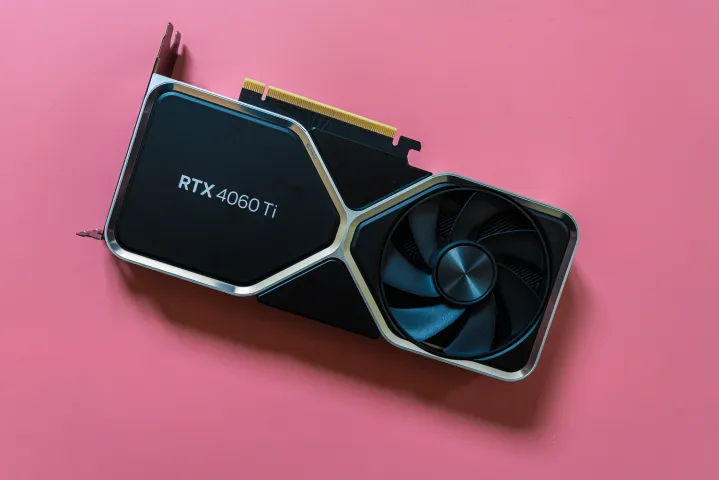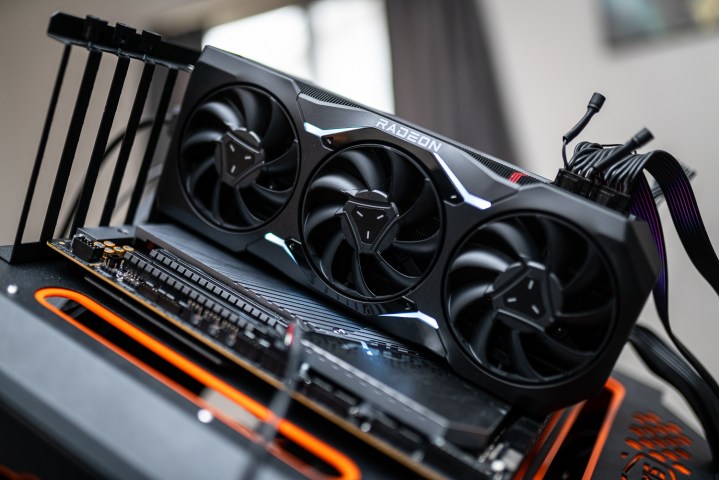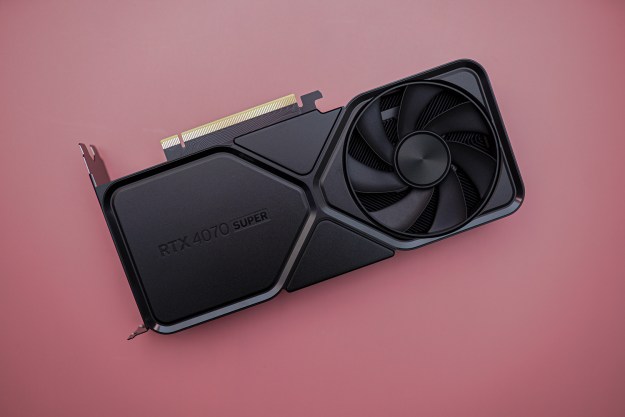The days of the GPU shortage are long over, but somehow, buying a GPU is harder than ever — and that sentiment has very little to do with stock levels. It’s just that there are no obvious candidates when shopping anymore.
In a generation where no single GPU stands out as the single best graphics card, it’s hard to jump on board with the latest from AMD and Nvidia. I don’t want to see another GPU shortage, but the state of the graphics card market is far from where it should be.
This generation is all over the place

Do you remember the days of the GPU shortage? It was a dreadful time, and I certainly don’t miss it. If you were trying to buy a GPU during the shortage, you know the struggle of having to pick any model that was available with little to no choice and still paying extra for it. The cards that were sold at list price usually sold out in seconds, and the ones that were sold by scalpers could go for up to 300% more than list price.
It took many months for GPU prices to settle and the stock levels to normalize, but it’s safe to say that we’re there now. You can pick almost any graphics card and find it at, or near, the list price. Some of them are selling for less, which only goes to show how much different the state of things is now compared to a year ago.
By the time the GPU shortage eased up, many people were already waiting for the next generation to come out instead of shopping for cards from the RTX 30-series and Radeon RX 6000. The hype was definitely there, but now, close to 10 months after the launch of the RTX 4090, I can say this: This generation is all over the place, and that makes buying a GPU a lot less straightforward than it seems.
I’m one of those people who deluded themselves into thinking that this generation would be better. I sat out the last gen, refusing to pay scalper premiums or hunt down the rare restocks. We stuck it out, my aging GPU and I. But come this gen, I was more than ready to spend the money and build a new PC.
I didn’t expect that now that the prices are lower than they’ve been in months, I — along with many others — would still have a hard time picking a worthwhile graphics card. The strange price-to-performance ratio of Nvidia’s latest-gen cards certainly plays a part in this dilemma.
Pay more, get less

Nvidia’s pricing strategy for the RTX 40-series has really put me off of this generation. We’re getting cards that are pretty expensive, but a lot of them aren’t worth the money, which, to me, is an important factor in buying a GPU.
Nvidia started out strong with the RTX 4090, which is one beast of a GPU, but it was too expensive for many to consider. The overclocked models often sold for around $2,000, and even the base price of $1,599 is a lot to spend. Most people have no need for an RTX 4090 anyway, so while the GPU offered one of the largest jumps in performance we’d ever seen, it wasn’t even on my radar.
Team Green’s next move was equal parts funny and alarming — it launched two versions of the RTX 4080, only to “unlaunch” one of them a little bit later. No wonder — the so-called RTX 4080 12GB received quite a lot of backlash before it ever made it to the market, so Nvidia made a good move by rebranding it and then selling it as an RTX 4070 Ti. However, that GPU was still a disappointment. Priced at $200 more than its last-gen counterpart, it failed to deliver the kind of uplift we’d expect to see for that price.
The RTX 4070 turned out to be the first GPU in this generation that I really paid some attention to. While it’s $100 more expensive than the RTX 3070, it still provides good value and unlocks Nvidia’s coveted Deep Learning Super Sampling 3 (DLSS 3) for those who care about it. Of course, its performance is a great deal less impressive than the RTX 4070 Ti, but it is also $200 cheaper.
Moving down the ladder brings us to the various RTX 4060s — two Ti versions and a base model. While the base model turned out OK as you can read in our RTX 4060 review, it also doesn’t really have the juice for carefree 1440p gaming; this is a 1080p graphics card in every iteration.
Unfortunately, Nvidia may have fumbled the whole thing by limiting the card’s VRAM to just 8GB. At a time when low VRAM is a hot topic, Nvidia launched two cards with just 8GB and a narrow memory bus, resulting in disappointing bandwidth. As a result, the RTX 4060 Ti 8GB is barely any faster than the last-gen RTX 3060 Ti in some games, but of course, it’s still pretty pricey. Nvidia tried to make a peace offering with the RTX 4060 Ti 16GB, but you might as well throw that extra $100 away because the GPU isn’t much of a step up from the 8GB version.
Last but not least, the RTX 4060. Since it only costs $300, we’re willing to forgive the low VRAM and call this a solid GPU. Still, if only three out of seven GPUs provide decent value, and one of them costs $1,600, it’s safe to say that this generation is a difficult time for Nvidia fans.
This wouldn’t be such a problem, though, if it wasn’t for the fact that AMD’s offerings this generation are severely lacking.
AMD is strangely quiet

When I first heard about the RX 7900 XTX and RX 7900 XT, I was finally ready to swap teams and try AMD in this generation. But, as time went on, I’ve slowly been growing less and less certain.
AMD’s presence in this generation hasn’t been as prominent as I had hoped. We got the two flagships last year, followed by months and months of silence — and while the RX 7900 XTX makes for a strong alternative to the RTX 4080, it only recently managed to crawl its way into the Steam Hardware Survey. That doesn’t bode well for the adoption of AMD’s pride and joy.
It might be that the RX 7900 XTX just doesn’t have that much to offer to warrant this kind of price point. Many people will default to the RTX 4070 Ti instead, and the RTX 4080 offers superior ray tracing and DLSS 3, making AMD’s card hard to justify at its $1,000 list price.
Moreover, AMD faces great competition from its own last-gen graphics cards, as the RX 6950 XT can be picked up for around $650 and it’s a 4K gaming GPU with all the bells and whistles you could wish for. There’s simply no reason to buy current-gen AMD cards.
You might find some interest in the RX 7600, which is arguably the star of the lineup right now. Priced at just $260 to $270, this GPU fits neatly into any budget-oriented build, but again, AMD’s last-gen options loom. At $330, the RX 6700 XT provides much better performance for only a slight increase in price.
That’s where the lineup ends, though. AMD has been silent on the RX 7700 and RX 7800, despite promising that they’ll release some time in the second half of the year. Meanwhile, Nvidia has worked its way down almost its full product stack. For AMD, you only have the option between flagship and budget-focused options with no GPUs in between.
Team Neither

I really want to build a new PC, and one way or another, I’m doing it soon enough. However, I never thought that I’d be so stuck on which graphics card to pick, and as I browse various enthusiast communities, I’m seeing the same confusion from other prospective buyers.
Do I buy last-gen despite the fact that we’re well into a new generation? Do I buy current-gen and just accept that I might not be fully happy with my decision? Those are questions that are echoed throughout various subreddits and groups.
I’m definitely not sitting another generation out, but I do wish there were more clear-cut options where the performance is solid, but the price isn’t inflated. Right now, there are only a few such GPUs, and Nvidia only has a couple more models left to release before it moves on to the RTX 50-series. AMD may still surprise us, but time is running out.
Many people are either Team Green for Nvidia or Team Red for AMD. Right now, I’m Team Neither, and I wish that wasn’t the case. Maybe I’m picky, or maybe this generation has a lot of GPUs that force you to settle for either mildly disappointing performance or an inflated price, and that makes picking harder than I can remember it being in years.
One thing is for sure — this generation has made me miss the days of the GPU shortage when the idea of a new graphics card actually got me excited.
Editors' Recommendations
- Don’t buy the RTX 3060 in 2024
- GPU prices are back on the rise again
- 5 GPUs you should buy instead of the RTX 4070
- Why you shouldn’t buy the best GPU of last year
- Nvidia is the ‘GPU cartel,’ says former AMD Radeon manager





